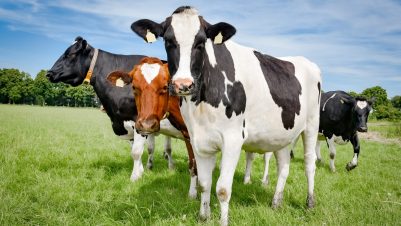Professor Dilys Morgan MBE, Head of Emerging Infections and Zoonoses at Public Health England (PHE) is one of first ports of call to assess the risk posed to the UK public’s health by new zoonoses – diseases that can be transmitted to humans from animals. Dilys has a strong commitment to the One Health agenda and finds this an exciting and diverse area of work, where she says “you never know what we will happen next”.
Developing the Human-Animal Infections and Risk Surveillance Group
HAIRS – the Human-Animal Infections and Risk Surveillance Group – is a cross-government, multi-disciplinary group that undertakes horizon scanning for potential infectious threats to the UK, and the assessing the risk of the threat.
The group developed under Professor Morgan’s leadership and has met every month for 11 years to consider a large range of potential health threats.
The group brings together experts from Defra, APHA, (PHE), FSA, DH and the corresponding animal and human health bodies from Northern Ireland Scotland and Wales.
“Our role is to assess the risk to the UK population. We discuss disease incidents and other threats mainly in animals and explore the public health implications. We then look at how to mitigate risk, such as producing guidance leaflets or forming an expert group to consider the issue in greater depth, and often we alert policy makers of the risks so that these can be dealt with at the highest level” explains Professor Morgan.
Work varies from analysing constant threats such as rabies, to more novel viruses and infections.
“For example, we are constantly reviewing the risk of incursion of non-endemic diseases such as rabies or Ecchinococcus multilocularis to the UK population. Currently, we are liaising with German officials regarding a novel Bornavirus associated with human cases of encephalitis and variegated squirrels.”
An important event took the attention of national television last year, in which Professor Morgan was called to comment on the first documented case of cat to human transmission of TB.
A spike of tuberculosis cases in cats had been reported, clustered around the Newbury area.
“We knew it was really unusual,” says Professor Morgan. “You don’t normally get so many cases in such a defined area.”
Through cooperation with local PHE Health Protection Teams, the PHE and APHA confirmed the first cat to human transmission of TB.
Schmallenberg virus (SBV)
Public Health England is aware of the risk posed to the UK by vector-borne diseases, says Professor Morgan, and when Schmallenberg virus (SBV) emerged in 2011, it was not known if it was zoonotic or not.
“We worked very closely with our veterinary colleagues to assess whether there were any threats to human health. This was mainly done through the Human Animal Infections and Risk Surveillance group. Although initial assessment of the virus suggested this was likely to be a livestock virus, human infections could not be excluded.”
“Using the links established through the HAIRS Group we were able establish surveillance of occupationally exposed individuals within four days of SBV reaching the UK. AHVLA staff visiting affected farms gave workers a jointly badged AHVLA and HPA (now APHA and PHE) fact sheet and details of what they should do if they developed symptoms.This was only possible through the well-established close working relationship between animal and human health. As everyone is now aware, SBV was found not to affect humans but it was a difficult time for all concerned, and because of potential longer term effects, this went on for many months.”
Ebola and pets
Since Ebola Virus Disease emerged in West Africa last year, PHE has worked with government to ensure risks to the UK were assessed and communicated and with NHS colleagues to ensure the UK remains alert to, and prepared for, the risk of Ebola.
This involved long hours and intense working over many months. However, during the many discussions, the role of companion animals in the transmission cycle was raised.
“A limited number of publications suggested that dogs were possible carriers of Ebola,” Dr Morgan says.
“Working with our veterinary colleagues, we had to evaluate the risk that pets would pose. Around this time, the pet dog of a nurse in Spain who contracted the infection from a patient was euthanased and a dog belonging to a nurse who was infected in the US was quarantined. This heightened the pressure on the UK authorities”
“Although there have been no reports of dogs or cats becoming sick with Ebola or of being able to spread the virus to people or other animals, robust plans for dealing with companion animals of potential Ebola cases had to be in place.”
The Road to Public Health England
Professor Morgan has worked in medical research in Africa and public health the UK, as well as short periods in other countries. She has spent 4 months in the last year supporting the Ebola response in Sierra Leone. She qualified as a doctor from Liverpool University and then trained to be a general practitioner, Professor Morgan then headed to Gambia to work with the Save the Children Fund for 2 years.
She returned to the UK to start her public health training before heading to Sierra Leone for four years to do medical research around river blindness – Onchocerciasis, a vector-borne disease.
In 1990, she returned to complete her public health training at Colindale, and the become Head of Field Services at Colindale’s Communicable Disease Surveillance Centre. She then worked on HIV in Uganda between 1994 and 2001, until heading back to the UK for more involvement in national public health.
Professor Morgan was head of gastro intestinal and emerging zoonotic infections at Public Health England, but since June she now focuses exclusively on emerging infections and zoonoses.






